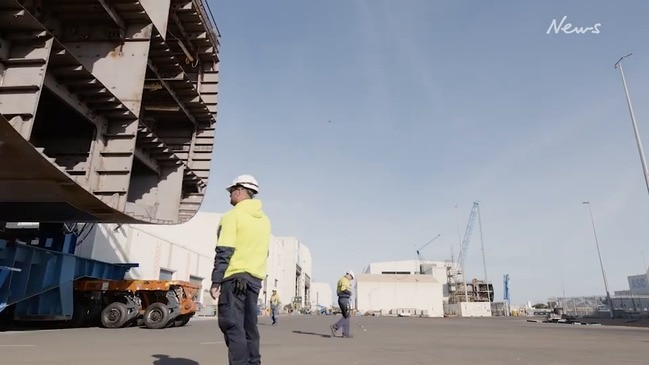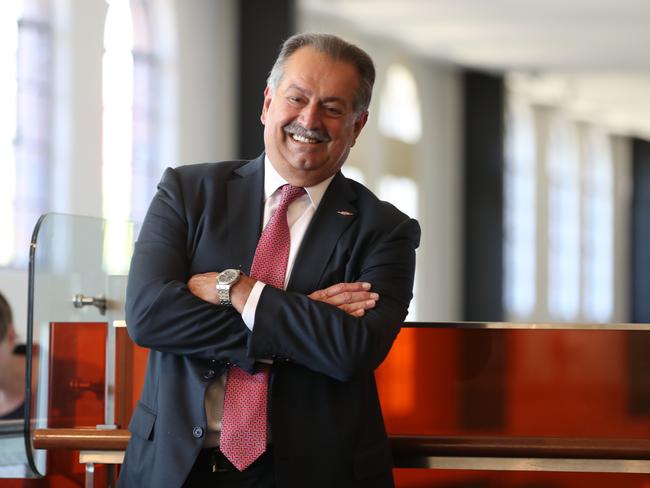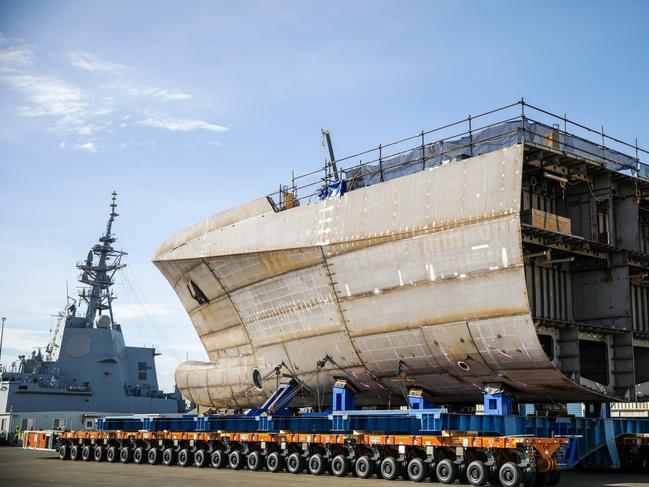Manufacturing overhaul should create half a million highly paid jobs, says COVID-19 recovery adviser
Half a million jobs can be created over five years if Australia can transform its manufacturing industry, with SA set to be the “epicentre” for defence and space. Here’s what a key adviser to the PM’s covid recovery taskforce says.

SA News
Don't miss out on the headlines from SA News. Followed categories will be added to My News.
Half a million highly paid jobs could be created in the next five years if the nation radically transforms its manufacturing industry, with South Australia set to be the “epicentre” for defence and space, a key adviser to Scott Morrison’s COVID-19 recovery commission says.
A bigger, more hi-tech manufacturing sector will inject billions of dollars into the economy, according to former Dow Chemical chief executive Andrew Liveris, who has advised US presidents Donald Trump and Barack Obama.
Mr Liveris is now working with the Prime Minister’s National COVID-19 Commission Advisory Board.
His manufacturing taskforce has recommended a national industrial strategy be launched, in which each state would take ownership of a key manufacturing sector to reduce duplication and competition across the country, and to fast-track growth.
“In South Australia, there’s no question you should be the epicentre of defence (and) space industry capability,” Mr Liveris said.

“I know the Premier is working very hard on that, there’s a precinct (Lot Fourteen) being developed. Well, let’s not make six of those happen across the country.”
The taskforce analysed several hi-tech manufacturing sectors that Australia could compete in globally and that could be split across the country.
It is understood they included mining technology, defence and space, medical technology, food and agricultural technology, recycling and packaging and renewable energy technology.
Mr Liveris said about 500,000 jobs could be created over the next five years or so and billions of dollars – equivalent to about 1 per cent of GDP – could be injected into the economy if the taskforce’s recommendations were implemented.
“The beauty of these types of sectors and products is that they are high margin,” he said. “A high margin means you can afford high wages and high salaries.
“These are tech sectors that every country in the world is lusting after.”

Mr Liveris called for a more “top-down” approach to manufacturing because industry was currently “too small, too diluted and too fragmented” and, in some cases, states competed against other states.
He also recommended launching “mezzanine” bridging loans to help small and medium businesses grow via a new fund, which would include government and private sector investment.
Mezzanine loans provide short-term finance to businesses for projects or acquisitions. The lender gets an equity stake in the company in case of a default.
Existing funding could be redirected rather than extra taxpayer money, while red tape should be cut to attract business investment.
“The private sector needs to feel that there is government certainty on the policy; in other words, the R&D tax credit, the skills availability, the provision of infrastructure, (and) let’s make sure that we get the permitting process efficient so you’re not waiting years to get permits,” Mr Liveris said.
Australia should also focus more on research and development through universities or national bodies, such as the CSIRO, he said.
In SA, the goal would be to help small and medium businesses grow and get certified to be part of foreign defence company and space industry supply chains.
“We’ve got to examine all the capabilities we have, mostly small, medium companies in everything from metals casting to instrumentation to navigation systems,” Mr Liveris said.
“We’ve got to get those capabilities defined and those companies defined, and then we’ve got to say to them ‘OK, what do you need to scale and qualify for our defence procurement?’”
It is understood the Federal Government is considering the taskforce’s recommendations ahead of its October budget.
